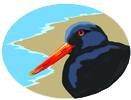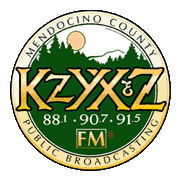The Western Bluebird is a rare sight here on the coast. So when I see that brilliant blue, like the early settlers, I associate it with love, joy and the renewal of spring. The blue of their feathers results not from a pigment but is iridescent from the refraction of light off the structure of the feather. It changes in intensity and hue from different angles.
Bluebirds are seen in fields and open woodlands often perched on fences and wires. In winter they join small flocks sometimes mixed with Yellow-rumped Warblers feeding on mistletoe and other berries. By March, they break into pairs. The courting male flutters in front of the female with his wings half-open and tail spread. Then he perches next to the female, preens her feathers and may offer her food. Bluebirds are the only members of the thrush family that regularly use cavities or bird houses for nesting. They line their nest, a loose network of twigs, with fine grass.
They usually lay four to six light-blue eggs and often start the second brood even while still feeding the first. In spring and summer they eat mainly insects, which they dart to catch in flight or pounce upon on the ground.
Bluebirds are now a species of concern; their decline is associated with the lack of nesting cavities due to the cutting down of dead trees and limbs and competition from European Starlings. So put up a nesting box in your back yard and you might be blessed with the bluebird of happiness.
Photo uncredited


